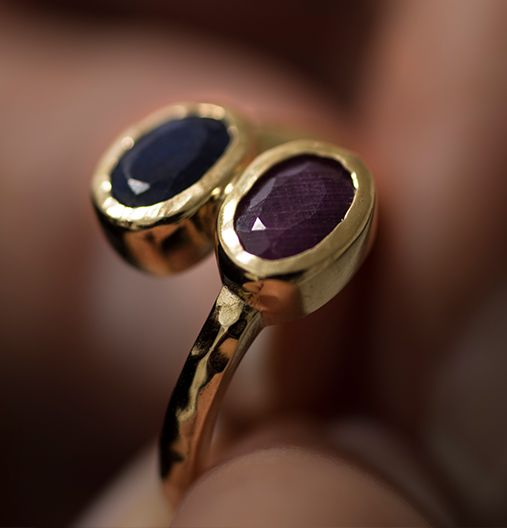Flowers of Israel Set
Set of Eight 0.5 oz. Silver 999 Medals
| Issuing Year | 2019 |
|---|---|
| material | Silver |
| Fineness | 999. |
| qaulity | Proof |
| weight_neto | 8 x 1/2 oz. |
| diameter | 50 mm |
| max mintage | 599 |
| design | Aharon Shevo |
Set of Eight 0.5 oz. Silver 999 Medals
| Issuing Year | 2019 |
|---|---|
| material | Silver |
| Fineness | 999. |
| qaulity | Proof |
| weight_neto | 8 x 1/2 oz. |
| diameter | 50 mm |
| max mintage | 599 |
| design | Aharon Shevo |
Gold Jewelry
Over time, elements such as dust, perspiration, and cosmetic products can cause harm to the quality of gold jewelry and diminish its luster. Although gold tends to not tarnish in the same way as silver, lower carat gold jewelry such as 9k and 14k will typically tarnish over time, especially if the jewelry comes into regular contact with chlorine, sulfur, perspiration and other acids. This can be amended by utilizing a soft polishing cloth to both clean and shine the gold jewelry. In the case of heavy tarnishing, gold jewelry should be taken to a professional jeweler for treatment.
Silver Jewelry
Silver jewelry tends to tarnish over time, as silver oxidizes when it comes into contact with oxygen in the air, high humidity, and body acidity. Tarnishing is to be expected with silver jewelry and is not a detect, however proper care and upkeep is key to maintaining and regaining silver the original luster of silver jewelry pieces.
Proper Storage
Silver jewelry should be kept in a closed container, minimizing the exposure to the air.
Proper Care
To avoid tarnishing, remove silver jewelry (rings primarily) before coming into contact with dishwashing soap and other similar solutions, including cosmetic products such as creams and lotions, as well as perfumes. Due to the makeup, perfumes can damage gemstones such as pearls and Roman Glass, as well as tarnish jewelry. Silver jewelry should also be removed before going into the ocean, pool, jacuzzi or spas that contain chlorine or sulfur. Many take added precautions and avoid wearing silver jewelry while bathing and remove pieces while sleeping to limit exposure to the elements.
How to Treat Tarnished Silver Jewelry with a Cleaning Cloth
The simplest and most common method is to polish with a silver cleaning cloth, an inexpensive and effective solution. If the cleaning cloth is stored properly after each use, it will remain in good condition for many polishings and can be used regularly.
When using a cleaning cloth, simply hold the jewelry piece in one hand and gently polish with the other. Apply minimal pressure and continue applying pressure while cleaning until the silver returns to its original luster.
The Original, Traditional DIY Cleaning Method
Always effective and safe for silver jewelry. Always clean with care and dry all jewelry thoroughly after each cleaning. Do not use these solutions with gemstones.
Gold Plated Silver Jewelry
Gold plated jewelry consists of a thin layer of gold, 0.05% actual gold or less, that coats the base layer of silver. Gold plated jewelry should be treated and cared for in the same way as silver jewelry, avoiding exposure to harmful elements and solutions.
Jewelry with Gemstones
Caring for silver and gold jewelry with gemstones requires added care, as gemstones are natural stones made of varying hardnesses and are liable to break or chip if not carefully handled. Jewelry with gemstones should be treated and cared for in the same way as all silver and gold jewelry, avoiding exposure to harmful elements and solutions. Exposure may cause harm and alter the colors of the gemstones, so added precaution to remove these jewelry pieces before certain activities is important.
As different gemstones have different physical properties, identifying your gemstone is critical before cleaning as they can react very differently to heat, light, acids and scratching. For a deep cleaning, jewelry with gemstones should be taken to a professional jeweler for treatment.
Jewelry with Ancient Coins
Over hundreds of years, throughout the different periods in the Land of Israel, metallic coins were struck by the various rulers and served as circulation coins. These ancient coins have been unearthed during archaeological excavations in Israel and dated to around 3,000 years or more ago. The coins were struck during the period from the second century BCE to the second century CE. Remaining in the depths of the earth for very many years, these coins became coated with a patina, the result of reactions to chemical compounds deep in the earth.
The ancient coins mounted in our jewelry, as well as those actually sold as ancient coins, were found in archaeological diggings in Israel and are sold by license granted by the Israel Antiquities Authority to Israel Coins and Medals Corp., in the G.R.A.S group.
Exposing the coins to water (showering, bathing in the sea, pool, high body acidity) will cause tarnishing and loss of their natural patina. Details on the coins are also liable to be rubbed away by water and a damaged coin cannot be restored or repaired.
Our Ancient Coin Jewelry has been meticulously designed and handcrafted. Each piece is absolutely unique for no one coin is exactly the same as another. Each jewelry piece deserves special attention and special care when worn.
